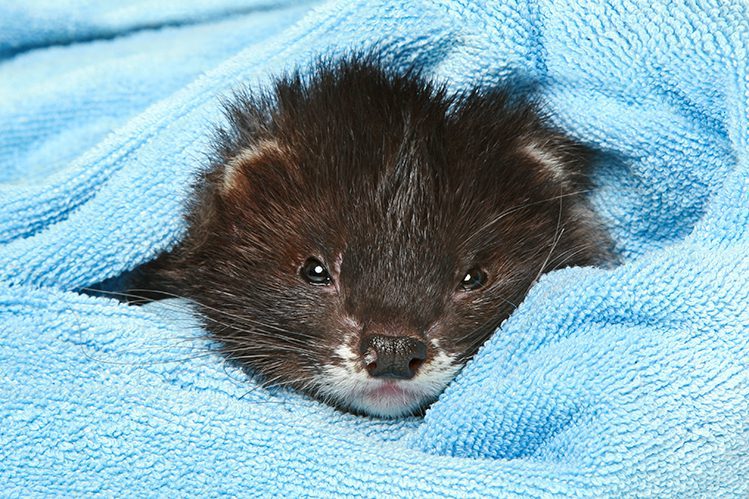
How to bathe a ferret?
Most ferrets just love to swim. But if the first acquaintance with bathing procedures was not very successful, the ferret may begin to be afraid of water and avoid it in every possible way. Our simple yet useful tips will help you bathe your ferret the right way, so that both he and you enjoy the procedure!
1. You need to prepare especially carefully for the first bath. Ferrets are rarely afraid of water, but the first experience is always stressful. Therefore, for the first time, pouring a lot of water into the bath is not worth it. And you can even replace the bath with a basin in order to gradually prepare the animal for the “big water”.
2. The optimal water level is up to the ferret’s chest. When your pet gets used to the water and likes to swim, you can fill him with an almost full bath. Watching how happily the ferret swims and splashes is a great pleasure!
3. Optimum water temperature: 35-37°C. Not higher.
4. Put a rubber mat on the bottom of the bathtub or basin so that the animal does not slip and is not nervous.
5. Enlist support. A partner will help you keep the ferret in case of an escape attempt, give you shampoo or a towel in time, and will simply be useful as moral support.
6. Stock up on special products for washing your ferret. Human, cat and dog shampoos, soaps and all other products not intended for ferrets should be discarded immediately. There is a high risk that in response to them, the ferret will develop severe allergies and dermatitis, and the quality of the coat will suffer. You need to choose special shampoos and conditioners for ferrets (for example, Bio-Groom or 8in1). The formula of such products takes into account the peculiarities of the skin and coat of ferrets: it does not irritate, does not dry out, effectively removes an unpleasant odor, deodorizes the coat and brightens the color.
Please note that unsuitable products can degrade the quality of the coat and spoil the color of the animal!

7. Following the instructions for use, carefully apply the shampoo to the pet’s coat. After shampooing, it is recommended to use the conditioner of the same company.
Avoid getting products and water in the ears, eyes and mouth of the ferret.
8. Rinse off the shampoo and conditioner with a gentle stream of water so that the strong pressure does not frighten the pet.
9. Your movements should be confident and calm, and your intonation should be friendly. Do not scold the ferret if he is afraid and does not obey. Your task is to make the procedure as comfortable as possible and instill positive associations with bathing in your pet.
10. After bathing, wrap your ferret in a towel and dry it thoroughly. If your pet is brave and not afraid of noise, dry it with a hair dryer.
11. Make sure that there are no drafts in the room. A ferret that is hot after bathing can easily catch a cold.
12. Place the washed ferret in a clean cage, on dry towels, so that it is completely dry and not dirty.
13. Don’t forget to give your pet treats! Even if he diligently acted up and resisted, the difficult procedure was nevertheless completed. Reward your hero!
14. How often should you bathe your ferret? It all depends on the degree of pollution of the pet and on your love for cleanliness. Optimal frequency: once a month.
15. Don’t overdo your washing. Cleanliness is good, but the natural lubrication must be preserved on the skin and coat. Bathing a ferret more than 2 times a month is absolutely not recommended, otherwise problems such as dry skin and coat, dandruff, dermatitis, hair loss, etc. will begin. We are sure you don’t need this!
Small impurities from the skin and wool are removed locally, using a damp cloth or napkin.
We hope you find our tips helpful. Happy bathing for your pets!





